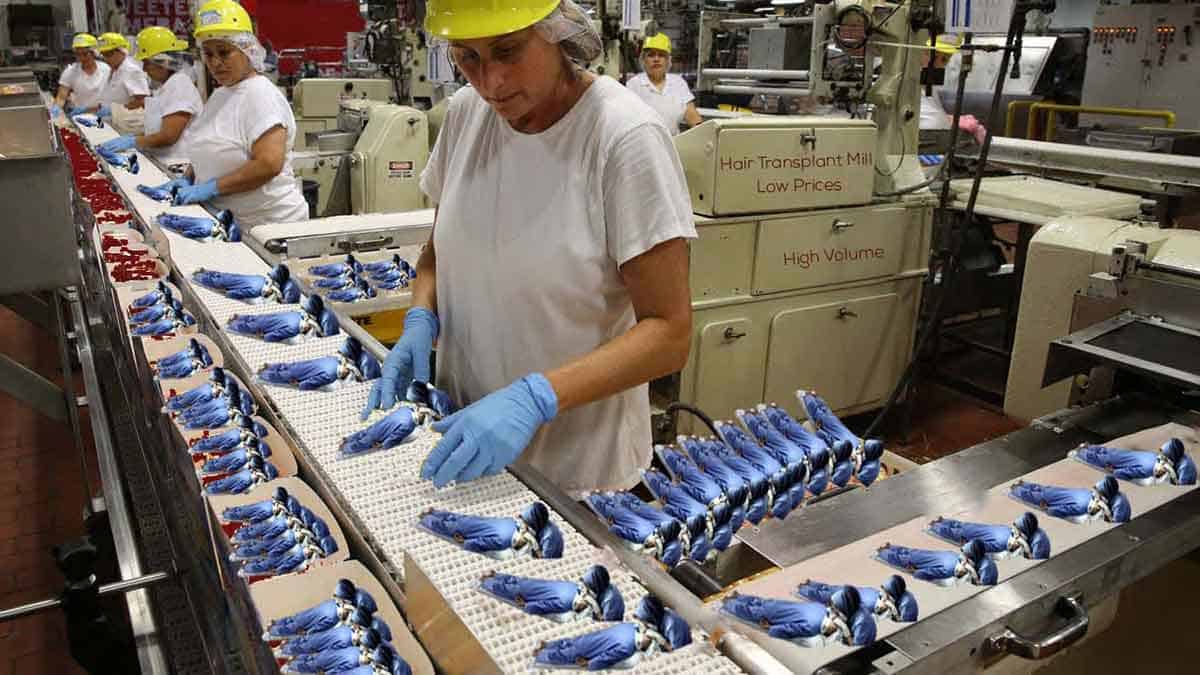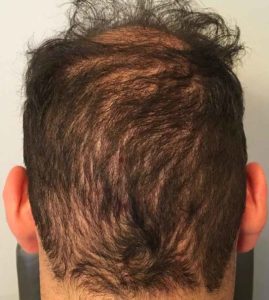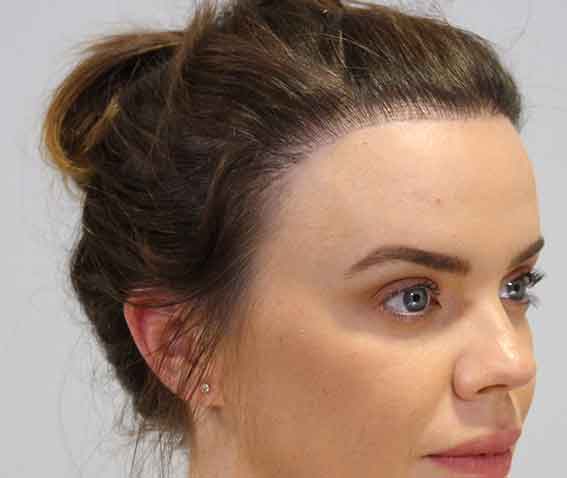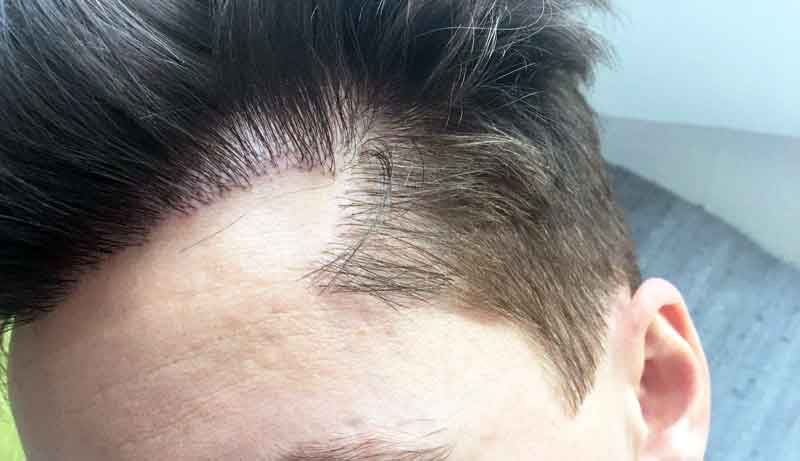- shares
- SHARE
- TWEET
- PIN0
- Love This0
- JOIN
It was 8:30 a.m. and I had just finished walking my dog, grabbing my cup of coffee, and settling in for another day of work. My routine usually includes speaking with my hair transplant doctor clients, editing educational hair transplant videos for my Youtube channel, and answering emails from everyday people wanting to know more about hair transplant surgery and hair loss. I also receive emails from people that have already had hair transplant surgery but are seeking my opinion on their results, or worse, they are hoping I can help them find hair transplant repair solutions. In other words, it was a day like every other day of the week.
That last part is what I don’t like about my job because each case is usually heartbreaking and they take a lot of energy to deal with. Unfortunately, I find myself talking to more and more patients every week about their hair transplant repair options than i do from the previous week. The trend is not slowing. You may be asking yourself, “Why would he be speaking with MORE hair transplant repair patients rather than fewer repair patients?”. The answer is simple. FUE.
Some Background Regarding Modern Hair Transplant Surgery
FUE (follicular unit excision) is a procedure that allows for individual hair follicles to be removed from the donor area on a one by one basis. Before FUE, there was “strip surgery”, otherwise referred to by the industry as “FUT” (follicular unit transplantation) and this designation indicated that a single continuous “strip” of tissue would be removed from the back and sides of the scalp. When performed properly and the patient has favorable healing characteristics, FUT scars are minimal and present very few downsides, but when they do not heal as intended, they can cause a lot of anxiety as well as mental and even physical anguish. Overall, FUT is a fantastic procedure and is responsible for many outstanding hair transplant results. However, the one factor that cannot be controlled is how the scar forms from each FUT procedure. FUE was supposed to be the answer to the problem of FUT donor scars that had plagued patients for years, and in many cases it has been, but FUE has also introduced a set of additional problems that are directly responsible for not only the rise in hair restoration repairs that I have personally seen, but new problems that were never before considered but have, in some cases, a more dire impact on the lives of the patients.
An Industry in Decline, And Why You Should Worry
According to Merriam Webster’s Dictionary a commodity is “a mass-produced unspecialized product”. Many times, commodities start off as specialized products that are made with extreme care and in small quantities to insure the most favorable outcome possible, but when shortcuts are introduced to the manufacturing process in the name of efficiency, problems begin to manifest as costs go down and the product loses a certain quality in exchange for mass production and mass profits. This is what is happening in the hair transplant industry.
Several years before FUE gained critical mass and became the dominant form of hair restoration surgery in the world, there was one way to have a hair transplant. One would have to have a procedure performed by a doctor that would use a scalpel. The resulting wound from the donor strip removal would require sutures, which is a skill taught in medical school. A small but dedicated team of technicians would be employed and diligently trained to perform very specific and repetitive tasks that would aid the doctor in creating a cosmetic masterpiece that the patient could enjoy for a lifetime. This is, of course, the ideal scenario but it was typical of many, if not most, of the better clinics performing hair transplant surgery. This surgery had to be performed by a doctor to get through even the most basic surgical aspects of a procedure and the skills required for such cases were found only through years of medical training. This is not to say that any doctor performing the procedure produced excellent results, far from it in fact, but the common denominator was that for better or for worse, a doctor was performing the procedure and the good doctors were fairly easily separated from the bad doctors based on market Darwinism.
This has changed. Today, more clinics are performing FUE than FUT and there are more clinics performing hair restoration surgery as I write this article today than at any time in history. The one commonality is that they all are performing FUE hair transplant surgery. The difference today is that in many cases, a doctor is not performing the surgery at all or, at best, they are only performing a part of the procedure which may not even be the most important part, the follicle excision. It can and has been argued that the most important part of any hair transplant procedure is the creation of recipient site incisions, which are where the grafts are placed for your eventual final result. But these incisions are not nearly as important as the harvesting process because if the grafts are destroyed from the harvest then placing them into the best incisions will still mean bad or no growth. Yet, oddly, when you find FUE hair transplant doctors that only do a part of the procedure, you rarely find them involved with harvesting but instead they are usually performing the incision making portion of the procedure. This means that they are leaving the more difficult, and vastly more important part of the procedure, to technicians.
The reason why this is contributing to the decline of the industry is simple. With less “real” surgery being performed by doctors, this frees up a clinic to employ more technicians that can and do take the place of doctors, and this means lower set up costs, fewer regulations to deal with, and a larger volume of patients each day. A doctor that used to be able to perform two surgeries in a day, employing five to ten highly trained (and highly paid) technicians, can now use fewer technicians to perform twice as many procedures, or more, at a lower price point to the patient(s). Patients pay less, but clinics can work on more patients and with less overhead for greater overall profits. At the basic level, a small clinic can be opened with two or three small rooms, a single technician and a receptionist can then be hired, and once the lease for an automated device is signed, one can start their own hair transplant clinic with minimal upfront investment and little to no experience. The profit margin and low threshold of entry is too enticing and while the industry is exploding in popularity, the quality is plummeting much like many products that are eventually turned into commodities.
With this model comes some variation, including clinics that previously had no interest in hair restoration, that are now adding the service as an adjunct to other cosmetic procedures such as Botox™ injections and tummy tucks. Finally, there is the classic “Turkish model” of hair restoration clinics where, many times, there is no doctor involved at all but instead a small army of technicians with little to no experience are hired to perform all aspects of the hair transplant procedure.

In some cases, I know of hairdressers that have started their own “clinics” and with the social media marketing that they can invest in for very little money, they appear to be legitimate professional surgical centers. Combined with the wide reach of the internet, and the ability to have reviews pop up out of thin air, YOU the patient are at greater risk today than ever before, for hair transplant surgeries and other cosmetic surgeries as well.
Why This is Bad For Patients

The explosion of clinics offering FUE hair transplant surgery is mind-boggling, but some common sense assumptions must be made. With the lack of specialization and little experience comes an increase in the misunderstanding of some very simple concepts. “Donor management” refers to the understanding of how to best harvest follicular units from the donor zone of any patient as there is more to FUE than simply removing a graft and placing it where it is needed in the balding scalp. There must be an understanding of how these extractions will affect the overall aesthetic of the donor scalp in order to avoid the appearance of surgery having been ever been performed. Those that do not understand this concept contribute to premature donor depletion and an unnatural aesthetic of the donor region.
These are not issues that can be camouflaged simply by growing one’s hair longer. The problem is that there is not enough hair to grow in the first place, and short or long, the donor region will look excessively thin, as if the patient is recovering from a round of chemotherapy or an attack by follicle feasting moths.
Further, this inexperience in indicated in the lack of understanding of the basic fundamentals of hairline reconstruction, which is where I see the majority of the problems with today’s hair transplant repair patients. Grafts that are too big, grafts that have unnatural angles, hairline designs that are not found in nature, and all of these problems combined are more common today than ever. This is not due to clinics not caring, it is due to a simple lack of understanding of the most basic fundamentals to begin with.

What is Being Done
This problem has been growing for several years and while a small but vocal minority has been sounding the alarm, the industry has grown unabated and without regulation. The anger and frustration held by many established ethical members of the industry, both medical and non-medical professionals, has so far resulted in impotence in the face of adversity as no single entity has been able to come up with a solution to this problem, much less implement one. Hopefully, that is about to change, as two important and powerful organizations are working together to institute real change for the benefit of the patient and the industry at large. The International Alliance of Hair Restoration Surgeons (IAHRS) and FUE Europe™ are teaming up to help educate doctors and practitioners in the field as well as consumers seeking their services. Medical professionals, both active and hoping to be active, in hair restoration will be encouraged to attend the FUE Europe meeting, held in conjunction with the IAHRS, in Manchester England on June 6, 7, 8 2019. This conference will be the first major hair restoration conference where the public will be invited to attend. The public will have access to presentations by some of the world’s most experienced hair transplant doctors and listen to former hair transplant patients give their testimonials about their own experiences, both good and bad.
More importantly, it is hoped that this meeting will be the launching pad for the first ever worldwide certification program designed to ensure that doctors performing hair transplant surgery, and the technicians assisting physicians, have a basic understanding of hair transplant fundamentals. Through continued education, certification can be awarded that will serve as your assurance that competency in the individual roles of the surgeon and the assistant has been achieved by every member of the hair transplant team of your choice.
Disclaimer: In no way should anyone without proper medical training and licensure perform any ACTUAL surgical aspects of a hair transplant procedure.

ABOUT THE AUTHOR
Joe Tillman has been a hair transplant industry professional since 2003 and has worked for some of the top clinics in the world. He started in the industry after receiving his own hair transplant repair procedures and gained a passion for helping others understand the realities of hair transplant surgery. Currently, Joe works with multiple clinics worldwide, manages and operates the most widely read independent hair restoration website in the world, www.hairtransplantmentor.com, and operates his Hair Transplant Class™ educational series on Youtube at https:// www.youtube.com/hairtransplantmentor. Joe is also the co-host of Spencer Kobren’s The Bald Truth, which broadcasts a two hour hair loss and hair restoration show twice weekly.



